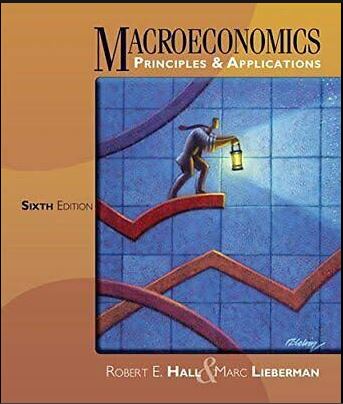
Microeconomics 6th Edition by Robert Hall, Shirley Kuiper, Marc Lieberman
Edition 6ISBN: 978-1133708735
Microeconomics 6th Edition by Robert Hall, Shirley Kuiper, Marc Lieberman
Edition 6ISBN: 978-1133708735 Exercise 8
Toward the end of the chapter,it was pointed out that a tax on labor income can cause a deadweight loss,just like an excise tax on a good.
a. Draw a diagram of a labor market in which the equilibrium wage is $20 per hour and total employment is 10,000 workers. On the graph,identify an area that represents total benefits to workers. (Hint: This area will be analogous to producer surplus in a goods market. Think about each point on the labor supply curve,and ask: What is the lowest wage at which this worker would supply labor,compared to the wage they are actually being paid?)b. On the same graph,identify an area that represents total benefits to firms from hiring labor. [Hint: This area will be analogous to consumer surplus in a goods market. Think about each point on the labor demand curve,and ask: What is the highest wage the firm would pay to hire this particular worker,compared to the wage it is actually paying?]
c. Draw a second diagram showing the impact of a $10 per hour tax on labor income,collected from workers. On this diagram,identify areas that represent,after the tax,each of the following: (1)the total benefits to workers,(2)the total benefits to firms,(3)the government's tax revenue,and (4)the deadweight loss from the tax.
a. Draw a diagram of a labor market in which the equilibrium wage is $20 per hour and total employment is 10,000 workers. On the graph,identify an area that represents total benefits to workers. (Hint: This area will be analogous to producer surplus in a goods market. Think about each point on the labor supply curve,and ask: What is the lowest wage at which this worker would supply labor,compared to the wage they are actually being paid?)b. On the same graph,identify an area that represents total benefits to firms from hiring labor. [Hint: This area will be analogous to consumer surplus in a goods market. Think about each point on the labor demand curve,and ask: What is the highest wage the firm would pay to hire this particular worker,compared to the wage it is actually paying?]
c. Draw a second diagram showing the impact of a $10 per hour tax on labor income,collected from workers. On this diagram,identify areas that represent,after the tax,each of the following: (1)the total benefits to workers,(2)the total benefits to firms,(3)the government's tax revenue,and (4)the deadweight loss from the tax.
Explanation
a)In the graph,DL represents the demand ...
Microeconomics 6th Edition by Robert Hall, Shirley Kuiper, Marc Lieberman
Why don’t you like this exercise?
Other Minimum 8 character and maximum 255 character
Character 255


